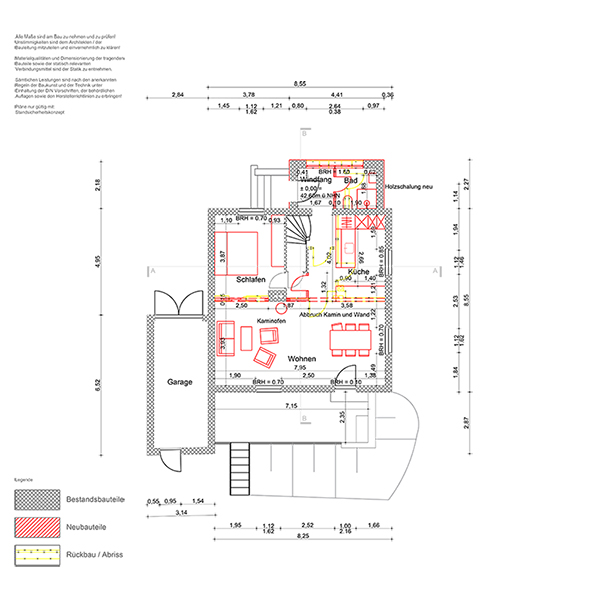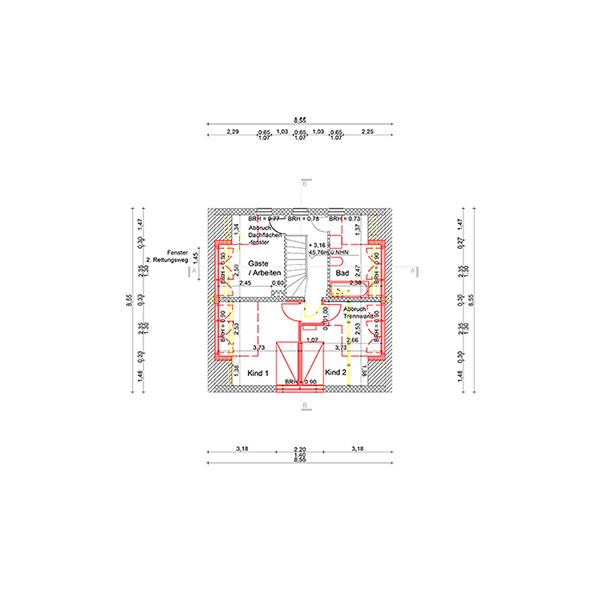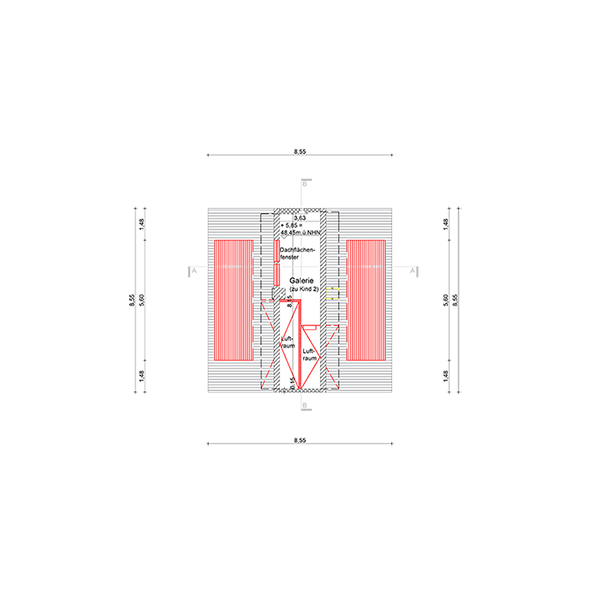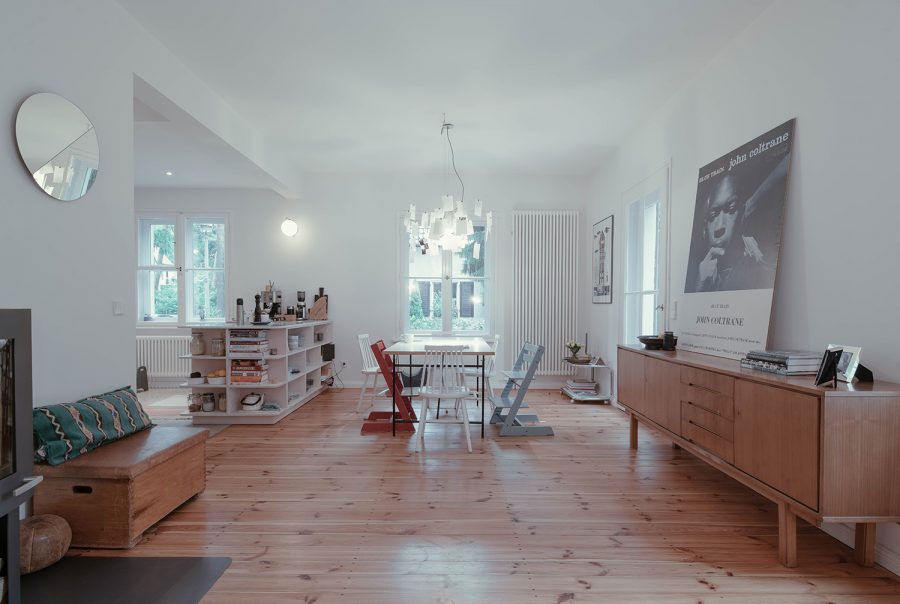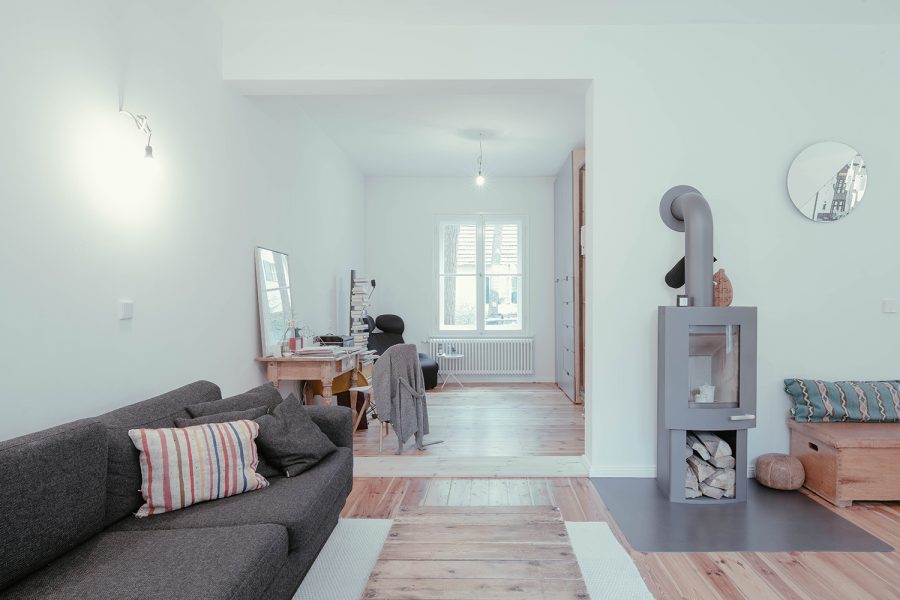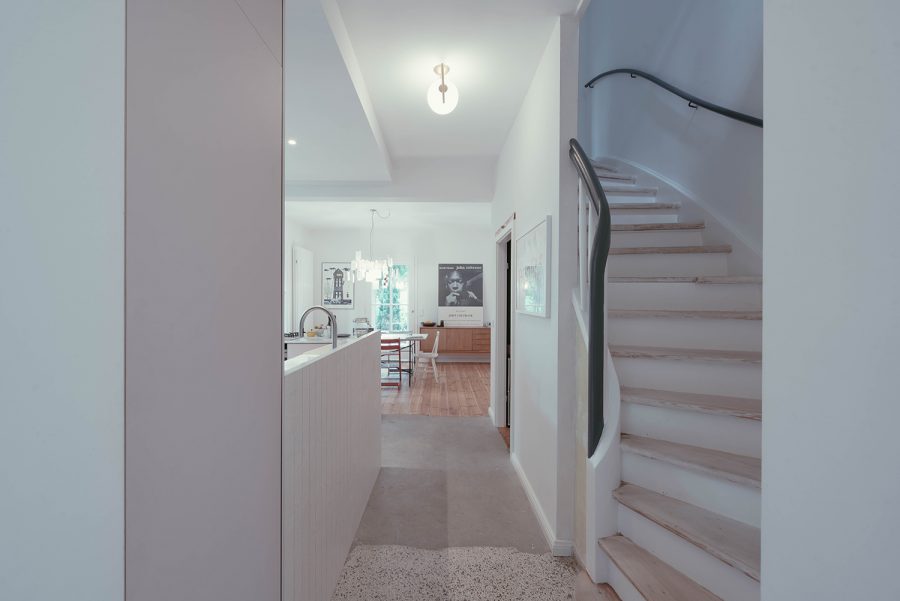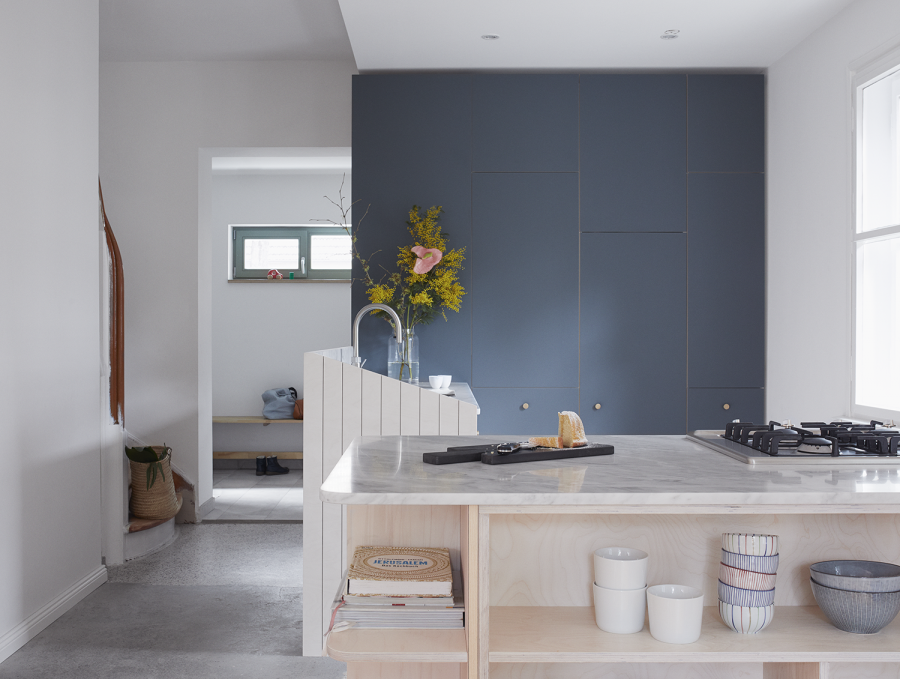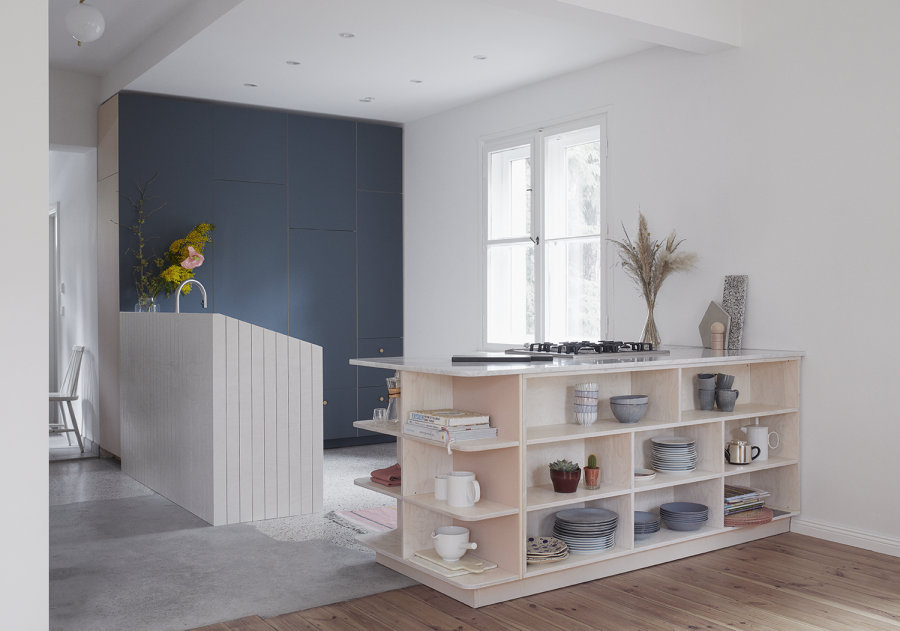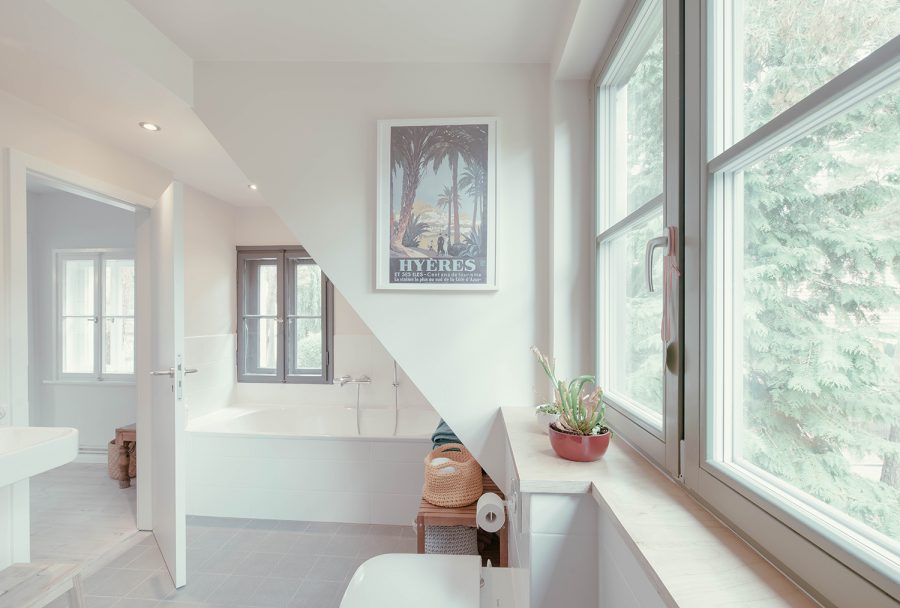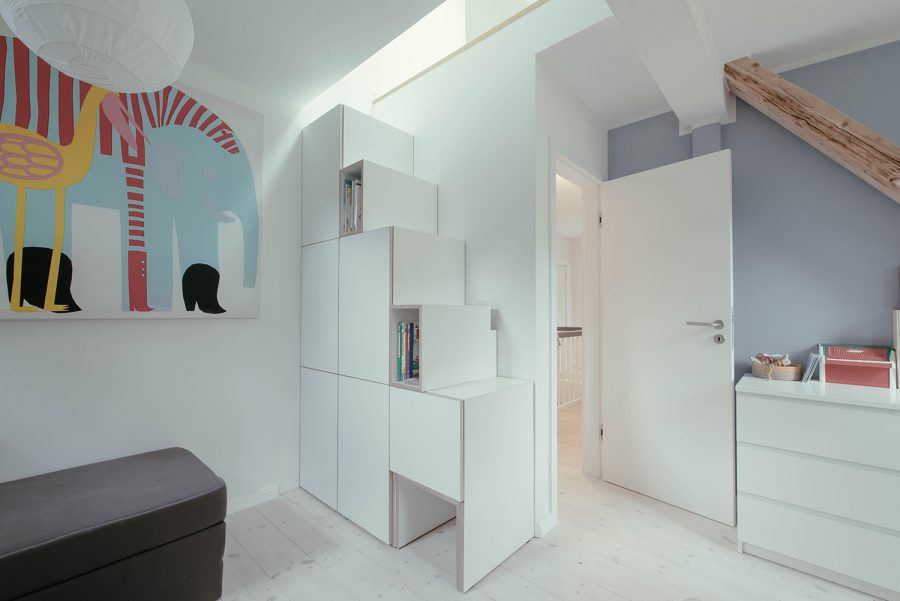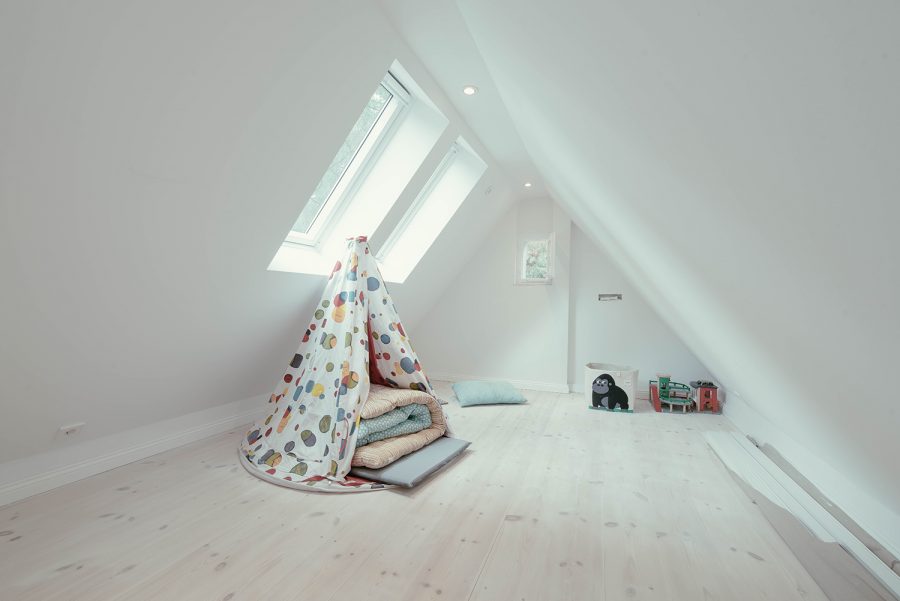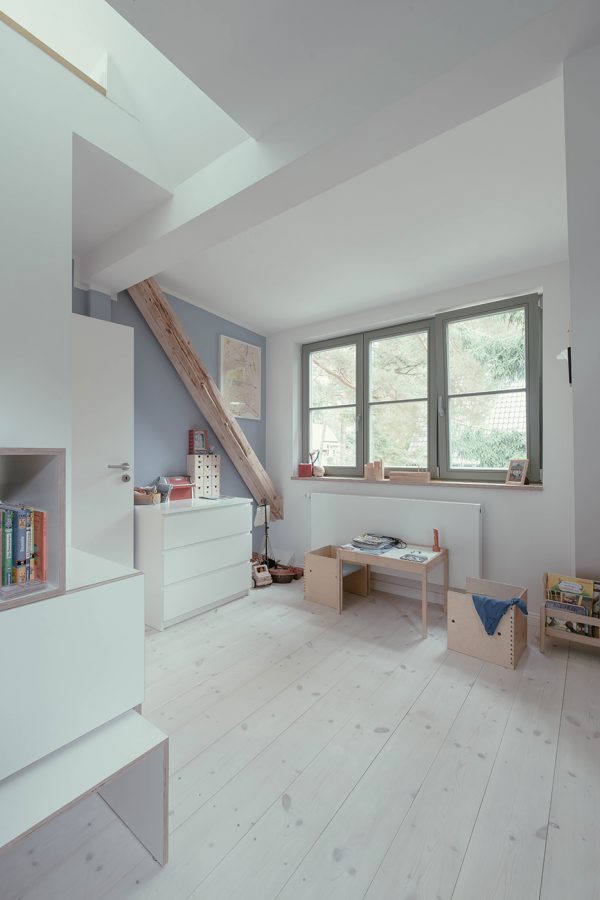House P P宅
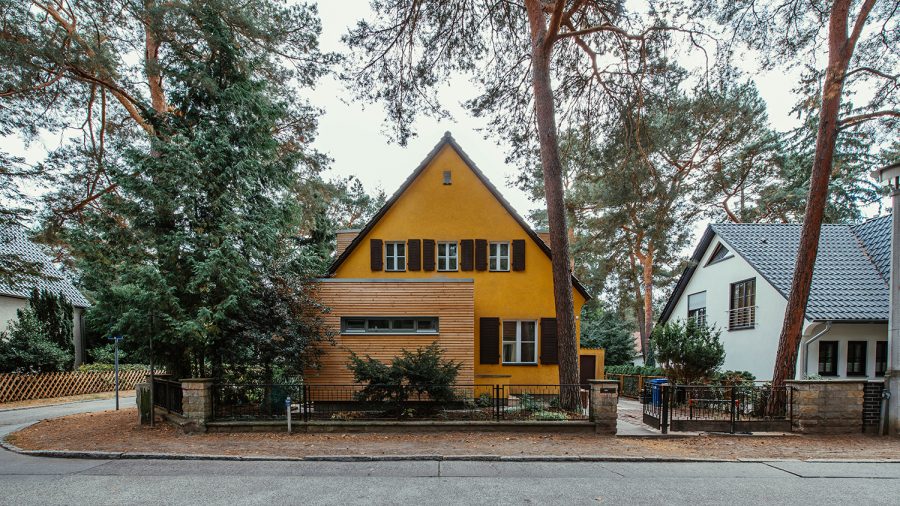
The original building of House P dates back to 1935. Situated in Kleinmachnow, a quite area outside the city center of Berlin, there are numerous comparable buildings around, and the entire community is surrounded by dense forests, making it a beautiful environment. Before we began this renovation, the building had undergone several modifications, including an expansion of its vestibule. This time, we seek not only to preserve the original building’s character but also to fashion a living space that resonates with our clients—a young, professional couple.
P宅原建筑始建于1935年。它所在的小马赫瑙区有许多类似的建筑,整个社区被包围在茂密的树林中,环境优美。在我们开始这次改造之前,建筑已经经历了几次改建,包括一个扩建的玄关。这一次我们也希望在维持房屋原有特色的前提下,创造出更多适合甲方(一对年轻医生夫妇)居住的空间。

The architectural conservation regulations in Kleinmachnow requires us to unconditionally preserve the main visual elements of the exterior walls, including the color and texture of the paint, the form and material of the roof, and even the size ratio and construction nodes of the windows. Although the client desires greater transparency for the building, we must incorporate decorative window mullions on the new insulated windows, dividing the large glass panes into smaller sections, reminiscent of the style in 1935.
小马赫瑙地区的风貌保护政策要求我们无条件保留外墙主要的视觉元素,不仅是涂料的色彩和肌理,屋顶的形态和材质,甚至开窗的大小比例和构造节点都不容修改。虽然甲方希望这栋建筑变得更加通透,但我们必须在新的保温窗上加入一些装饰性的窗棱,把大玻璃分隔成小块:就像在1935年那样。
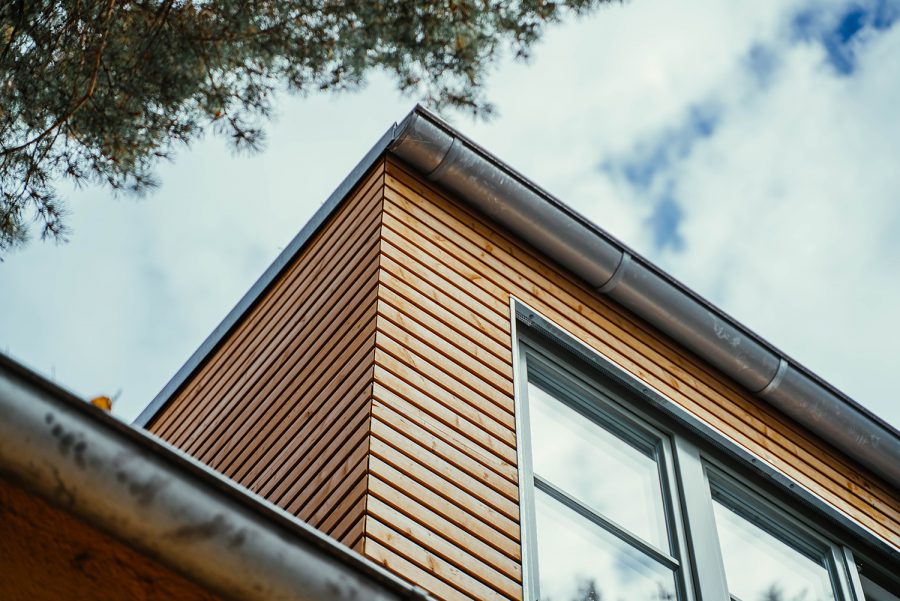
However, we still made some modifications to the interior and exterior of the building as much as the regulations allowed, presenting our renovation and previous additions in a more modern way, which also highlights the charm of the old building. To expand the area on the second floor, within the allowable area limit, we added bay windows to both sides of the sloping roof. They, along with the vestibule expanded in the 1990s, are “newly grown” volumes. We chose larch panel as the facade material, allowing them to harmonize with the old building’s earth-yellow painted walls while clearly indicating that they were later additions, more modern blocks. To make the “modernity” clearer, we even flattened the sloping roof of the vestibule, restoring it to a simple box shape, and replaced the small windows resembling fortress loopholes with a more modern horizontal long window, the maximum within the area and form allowed by the strict conservation regulations.
不过,我们还是尽可能在政策允许的条件下对建筑内外做了一些改造,让我们的改造和前几次增补都以更现代的方式呈现出来,这样的对比也能更好地凸显老建筑的风貌。为了扩大二楼的面积,在规划允许的面积上限内,我们给坡屋顶的两侧都加建了老虎窗。它们和90年代扩建的玄关都属于“新长出来”的体量,我们选择松木饰面作为表皮,让它们跟老建筑土黄色涂料墙面和谐共处的同时,也能让人清晰地感知到这是后来加建的,更现代的体块。为了让“现代性”更清晰,我们甚至把玄关的坡屋顶削平了,把它恢复成一个简简单单的方盒子,把碉堡探望孔一样的小窗户改成了一条更现代的横向长窗,当然也是在风貌保护允许的面积和形式范围内。
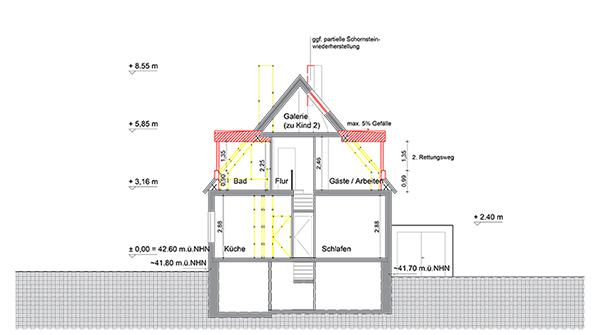
We made more radical changes to the interior. The ground floor is used as a living room, dining area, and kitchen. We removed all non-load-bearing partition walls to make the space open and transparent. The original floor was preserved and renovated, and the staircase area retained the original terrazzo and traces left after the walls were removed, with concrete filling the gaps, preserving and presenting the historical layers of folds in this way. The second floor retained the original partition walls, with four rooms divided into bedrooms, two children’s rooms, and a bathroom. The space under the roof was also utilized, connected to the two children’s rooms. Although the slope up and down is a bit steep, it has become secret gardens for the two daughters.
我们在室内部分做了更加大刀阔斧的改造。一层被用作客厅、就餐区和厨房,我们去除了所有非承重的隔墙,让空间变得开阔,通透。原有的地板被保留和翻新,楼梯区域保留了原始的水磨石和拆除墙体后留下的痕迹,空隙中填入混凝土,历史层层叠叠的皱褶以这样的方式被留存和展现出来。二楼保留了原来的隔墙,被隔出的四个房间用做卧室,两间儿童房和卫生间。屋顶下面的空间也被见缝插针地利用起来,分别与两间儿童房相连,虽然爬上爬下的坡度有点陡峭,却成了两个女儿各自的秘密花园。
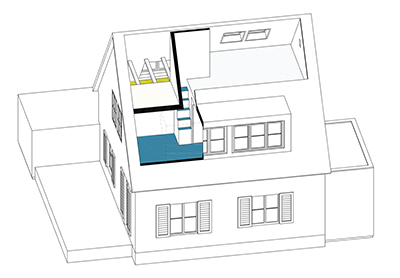
Project details
-
PROJECT LOCATION 项目地点:Kleinmachnow, Brandenburg, Germany 德国勃兰登堡, 小马赫诺
-
WORKING RANGE 工作范畴:Interior Design 室内设计
-
TYPOLOGY 项目类型:Residence 住宅
-
BUILDING AREA 建筑面积 (m²):215 m²
-
PROJECT STATUS 项目状态:Built 建成
-
DESIGN STARTING 设计开始:2016/08
-
CONSTRUCTION FINISHED 项目落成:2018/05
-
PRINCIPLE DESIGNER 主持设计师:蔡为, Philipp Buschmeyer
-
Kitchen Design 厨房设计:Jäll & Tofta
-
PHOTOGRAPHY 摄影师:Anne Deppe, Kin Wah Lok



